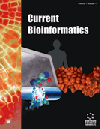
Full text loading...
We use cookies to track usage and preferences.I Understand
Accurately predicting survival in hospitalized COVID-19 patients is crucial but challenging due to multiple risk factors. This study addresses the limitations of existing research by proposing a comprehensive machine-learning framework to identify key mortality risk factors and develop a robust predictive model.
This study proposes an analytical framework that leverages various machine learning techniques to predict the survival of hospitalized COVID-19 patients accurately. The framework comprehensively evaluates multiple clinical indicators and their associations with mortality risk.
Patient data, including gender, age, health condition, and smoking habits, was divided into discharged (n=507) and deceased (n=300) categories. Each patient was characterized by 92 clinical features. The framework incorporated seven feature ranking algorithms (LASSO, LightGBM, MCFS, mRMR, RF, CATBoost, and XGBoost), the IFS method, and four classification algorithms (DT, KNN, RF, and SVM).
Age, diabetes, dyspnea, chronic kidney failure, and high blood pressure were identified as the most important risk factors. The best model achieved an F1-score of 0.857 using KNN with 34 selected features.
Our findings provide a comprehensive analysis of COVID-19 mortality risk factors and develops a robust predictive model. The findings highlight the increased risk in patients with comorbidities, consistent with existing literature. The proposed framework can aid in developing personalized treatment plans and allocating healthcare resources effectively.

Article metrics loading...

Full text loading...
References


Data & Media loading...
Supplements

